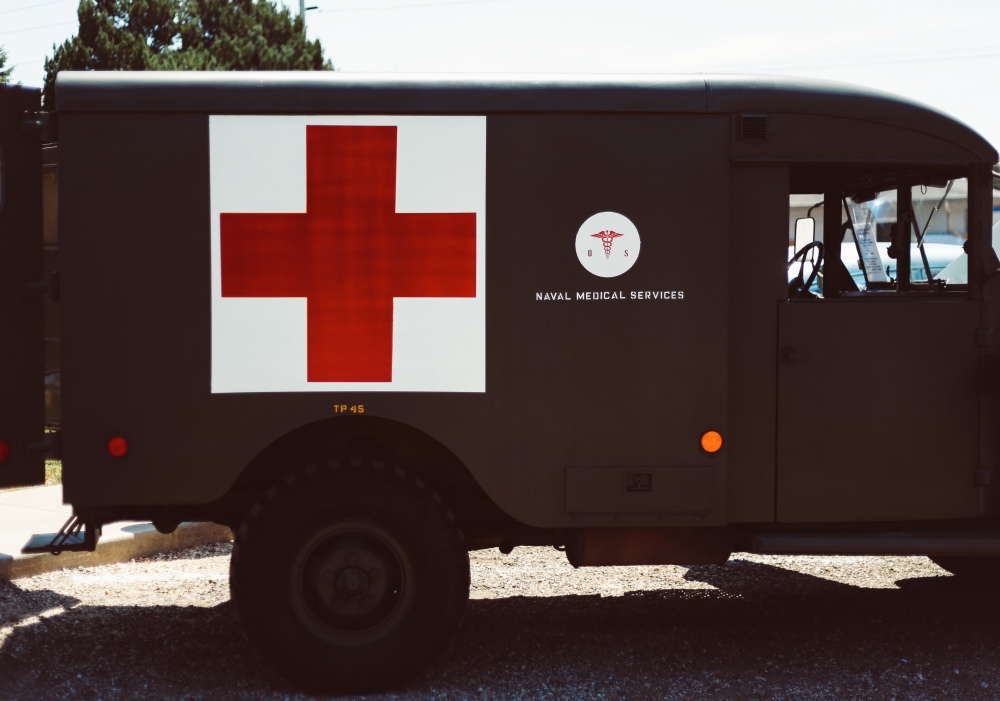
As the world marks the 70th anniversary of the 1949 Geneva Conventions, DAVID ADAMS looks at some facts and figures surrounding the conventions…
As the world marks the 70th anniversary of the adoption of the Geneva Conventions on 12th August, 1949, here’s some facts and figures…
• The Geneva Conventions, sometimes known as the “laws of war”, are actually a series of four conventions and three additional protocols which define the basic rights of prisoners during wartime and establish protections for the wounded as well as the sick and for civilians in and around a war-zone.

The Red Cross used as a protective symbol on the side of this US Navala Medical Services truck. PICTURE: Allie Smith/Unsplash
• The origins of the conventions go back to the 1860s when an international treaty to provide protection for sick and wounded soldiers during wartime was proposed by Swiss businessman Henri Dunant, founder of the newly instituted International Committee of the Red Cross (and 1901 inaugural Nobel Peace Prize winner). This first Geneva Convention was adopted by 12 states in Geneva’s city hall on 22nd August 1864.
• The first signatories included the Swiss Confederation, the Kingdoms of Belgium, Denmark, Italy, The Netherlands, Portugal, Prussia, Spain and Wurttenberg as well as the Grand Duchies of Baden and Hesse and the French Empire (two more states – Norway and Sweden – signed in December that year).
• Today, the First Convention, which was significantly updated in 1906, 1929 and in 1949, contains 64 articles and, as well as dealing with protections for wounded and sick soldiers during conflicts also provides protections for medical and religious personnel, medical units and medical transports.
• The Second Convention, which was first adopted in 1949 and replaced the Hague Convention of 1907, deals with protections for wounded, sick and shipwrecked members of armed forces at sea during war as well as covering associated maritime-related issues like the protection of hospital ships. It has 63 articles.
• The Third Convention, which deals with treatment of prisoners of war, was first adopted in 1929 and revised in 1949. It has 143 articles.
• The Fourth Convention, which concerns the protection of civilians in war including in occupied territories, was also first adopted in 1949. It has 159 articles.
• The symbols of the red cross and red crescent were adopted under the conventions and, despite popular belief that they mean “medical services”, they actually mean “don’t shoot” ands mean that the person, building, vehicle or equipment displaying the emblem is providing humanitarian assistance (an additional symbol – the red crystal – was added in 2005 for countries that object to use of a cross or crescent).
• Two protocols were adopted to extend the terms of the conventions in 1977 – they deal with the protection of victims of internal and international conflicts – and a third in 2005 which established the red crystal as an alternative symbol.
• The four 1949 conventions have been ratified by 196 countries wholly or in part.
Major sources: ICRC; History.com.






